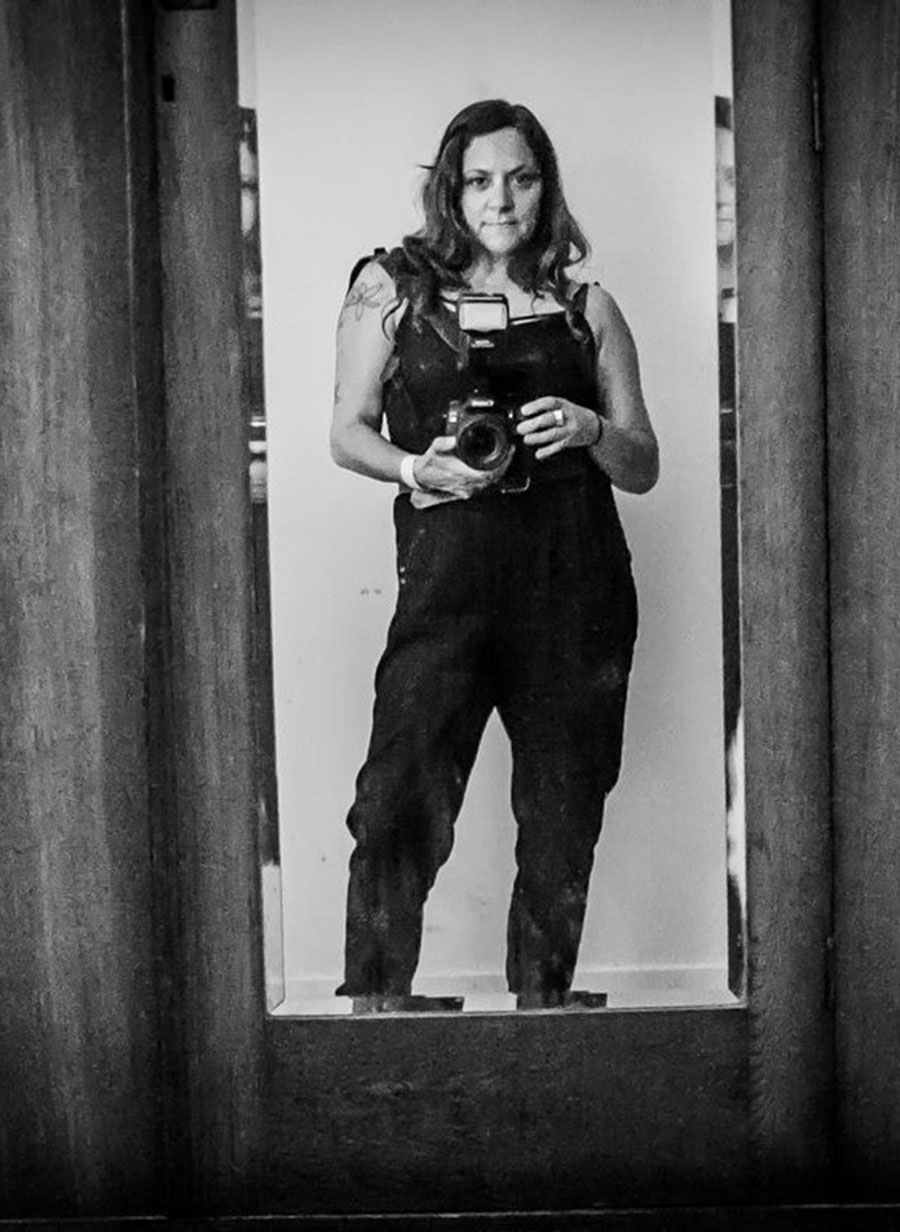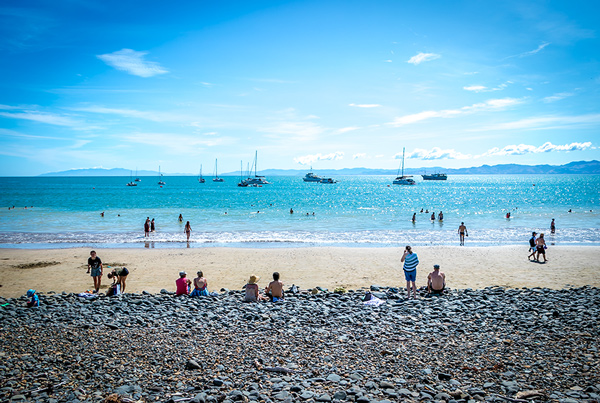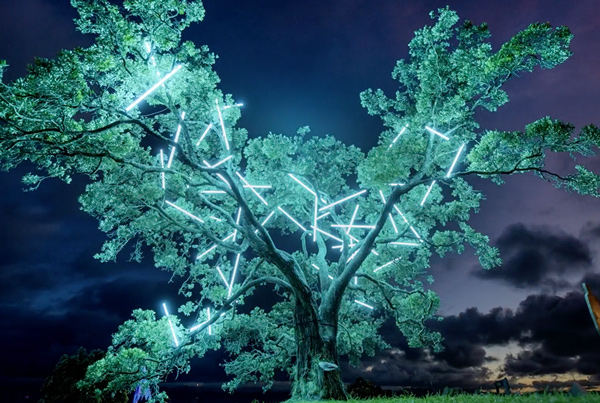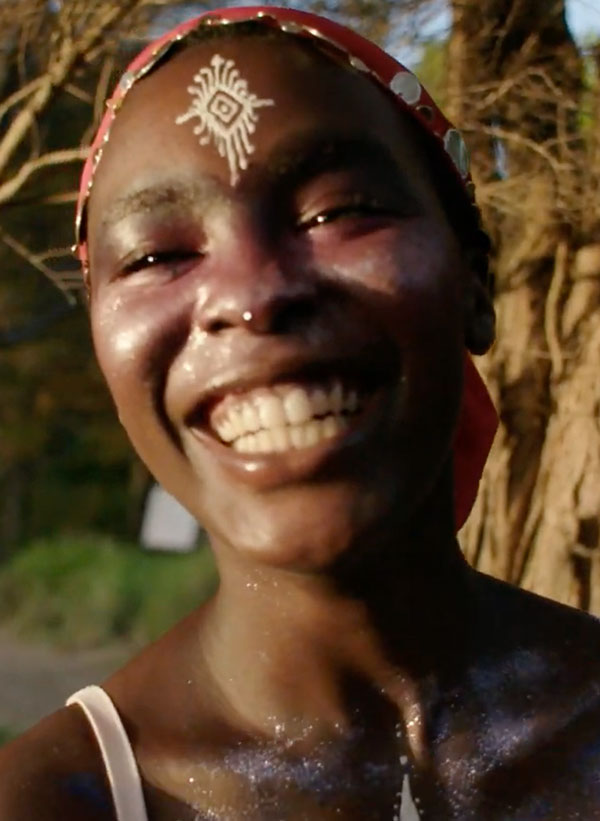

In Conversation With Serena Stevenson
26th June 2025
When photo journalist and documentary artist Serena Stevenson decided to make Three Days In February, a film about the music and arts festival Splore at Tāpapakanga, she had more than 20 years of personal connection with the festival and five years of footage in the can. And then everything went dark. Sarah Daniell talks with the director about how a chilling diagnosis was the catalyst for a shift in perspective, not just for the film, but life, and asks, what is the role of the artist in an ever-changing and challenging world?
Sarah Daniell: I couldn’t work out whether Three Days in February was a love letter or an exercise in meditation? When you’re there with the audience, how do you observe it?
Serena Stevenson: It’s a film about human connection, a reminder of what’s important. The Whenua. And if you really get inside of it, you will feel yourself being transported into those long, slow-mo motion holds because we filmed it that way. I didn’t want to film it as a quick cut documentary that has however many handfuls of shots to illustrate a sequence in that part of the story. I wanted the cameras, the cinematographers, to hold and allow life to happen in the frame, which is super hard. Technically, that was not easy to do. I wanted to really push the boundaries of that and go hold on a minute, slow down, breathe, get to know yourself, and be immersed and slow down.
SD: There’s this really beautiful quote from a documentary The House Within, about the author Fiona Kidman: observe the silence, not what’s being said, because that’s where you’ll find the story.
SS: The spaces in between. I photograph like that too. It’s intuitive. I really believe that it’s just a natural thing. I’m quite a vivacious sort of person and personality, but I’m quite a quiet sort of observer. I’m super inquisitive, like I remember my auntie telling me, you’ve been like that. You always want to pick something up, look underneath it. What’s that? Where does it come from? So I don’t really see myself as a story teller. I see myself as a story listener. I kind of actively listen, and then I allow myself to be a vehicle for other people to express themselves. I share whatever I discover. What does it mean to be human?
SD: And that is actually a really big question for right now, being human against a backdrop of mayhem, carnage and chaos.
SS: It’s a really good question, because all of my work as a documentary artist is multi-layered. I like to take that David Attenborough approach: just show the world. Show us how beautiful our connections are, and our essence of being human, and our connection with ourselves, each other, and hope that we will preserve the quality of that.
SD: Is it your job as an artist, film maker, to make a difference, or be an agent for change?
SS: My master’s documentary project was called Beyond Documentary, and it was questioning whether we’re really making a difference by showing the death and destruction, all the social challenges that young people or marginalised communities have, and conflict areas. And how am I going to contribute to those narratives, and through my documentary practice?
SD: What was your conclusion?
SS: I was in India, photographing the Losar Tibet New Year in Dharamshala. This was in late 1997 and where the Dalai Lama lives. I managed to get myself into the community by following a New Zealand nurse who was looking after Tibetan refugees – a really positive human connection story that I got published in a magazine. And I had the opportunity to photograph the Dalai Lama in this procession in front of his community. There was a big courtyard and I was lucky enough to get to the top, next to where he was standing. All of the media, the other photographers, were scrambling over each other, trying to get this shot of him. And I was thinking, that is not how I can approach this. It’s just not me. And so then I just crouched down, maybe a couple of meters behind him and I just sat there, and his monk ‘body guards’ were sort of in between me and him, and one of them saw me, and he turned around, he looked at me and then he sort of opened his arms out towards me and the Dalai Lama, and I was like, ‘Oh my gosh, he’s actually inviting me to move a little bit closer and photograph him from here’. The Dalai Lama turned around and smiled and let me take a photograph. I was in my 20s, and from that moment on, I knew that was how I was going to approach what I do.
SD: How do you balance the reality of what’s going on out there, what’s in the public interest to know but also keeping a view of humanity in the world and a really kind, optimistic sort of a lens, I suppose.
SS: I made a film about the northeast of India, which had been in conflict for a long time. It’s called Roots on the Move and I focused on this group of people from the northeast who lived here, who brought together New Zealand, Australian and local musicians to tour a music festival in peace around the northeast. Along the way, I met insurgents and the army. I met poets and youth and I let them talk about what’s going on. We went on this two-month tour. Some people in the little towns we went to had never seen a live concert before. So, yes, I did film the army, pushing the kids, beating them down with bamboo sticks and standing there with their AK47s. I did use archive footage of the violence … but it was also about uplifting these people, their story.


SD: You feel your work is making a difference?
SS: I guess the answer is, it has to. You just have to keep plowing forward knowing that your kaupapa is to uplift and show how beautiful it can be. The masters project was asking the question, are we actually making a difference by doing these stories as documentary artists, filmmakers, and narrative storytellers? And so part of what I did with a research project was following these two girls who were getting themselves into trouble and not going to school. They were 13, and I gave them cameras and taught them how to express themselves through photography and video. It was about participatory storytelling. To allow the key protagonists or characters in your stories to actually tell their own stories and to control the narrative. And through that, there’s an incredible amount of healing that happens for them.
SD: It’s very empowering to be given a tool that almost takes you out of your pain, because you’re focusing on a different aspect of yourself or life?
SS: Being able to drive that yourself is super empowering and self reflective, and also gives young people new tools to express themselves. And a lot of trauma that happens in one’s life, even for these kids at such a young age, you are still in that. And it’s why Three Days in February takes people outside of themselves. That’s what we do when we go to music and arts festivals, right? We take our stuff outside of ourselves.
SD: How did the young women deal with that challenge?
SS: We stayed in the marae with young reform kids. Really troubled kids. They need care all the time. They’ve come from really hard backgrounds. And this young girl, she just couldn’t be part of the workshop. So I would take myself out of the wharenui, and go and sit and talk to her. I started to talk to her about what her life was like, and her whole life revolved around marijuana. And from a young age, like five, she started liking marijuana. She sold it, she dealt, it was her whole world. And then we started talking about gardening and it turned out she really loves flowers, so she started photographing really beautiful close up flower portraits. We exhibited them and she sold them. She went wow, this is a whole other world. It gave her a voice and another purpose. It helped her to see something connected with something else that she really loved, and just transformed her.
SD: You’re creating a partnership.
SS: Going through a programme like this is transformational. I have a very unconventional way of teaching or creating. It’s collaborative and it just makes people go, ‘okay, wow, what? Whoa, you’re including me in this?’ So it’s just a shift. It’s like a conversation.
SD: You’ve been going to Splore since 2000 before you started filming and documenting it?
SS: I started photographing it in 2004 filming it and photographing 2008 because it was every two years. I started making the film and shooting it in 2018. It started off as a traditional documentary, following three characters, and how Splore changed their lives. And then in August, my eyesight thing happened …
SD: You lost your peripheral vision – for anyone that’s scary but a film maker – that’s a really cruel curve ball. It must have been fucking terrifying.
SS: Oh, yeah. I mean, for anybody. As human beings, the way in which we interact, perceive and live is 80 percent through our vision. Of course initially there were all sorts of things going on – the shock of it, and then also my brain damage symptoms. We’re in level four lockdown. I couldn’t get all of the care that I needed. I couldn’t look after my son Jackob. Mum had to look after him. Was I saying it’s not fair? No, I didn’t have time to say that. I didn’t really know what was happening. I didn’t fully understand the diagnosis at the time. I didn’t understand what was happening. When I went through the process with the ophthalmologist, he basically left me with a post-it note with the words N.A.I.O.N [Non-arteritic Anterior Ischemic Optic Neuropathy] written on it, and said, ‘go and Google it’. I couldn’t even look at a computer screen … It was a very weird thing to do.
SD: Diagnosis by post-it note. WTF?
SS: But right from the onset, I was determined to make it better, as better as I could, best as I could. And I was not accepting what the diagnosis was. I was not accepting ‘your vision will never get better’. And luckily for people like Suzanne McNamara [documentary co-producer] and Amanda Wright [co-founder of Splore] put together a Give a Little campaign for me and raised money for surgery in Germany. After 18 months, I went back to the film, and it’s also been a big part of me getting to where I am now. I can’t do the big commercial projects that I usually do on tools, but I can certainly create and direct. I haven’t lost my full vision. And vision is one thing, but it’s different to eyesight.
SD: Is it true that when you lose a sense, you develop another? Do we generally really limit or underestimate ourselves as human beings? Using 10 percent of our brains, for example.
SS: It’s true. I’ve actually been able to re-channel neuroplasticity. I’ve created that expansion of my brain-body connection. But this is what happens in trauma. We have this ability to adapt and survive and I think that’s actually the superpower that happens. I knew that I had two options: I could either give up on myself or keep going and believe that this was a gift, and I chose the belief. And this is a gift, believe it. I’ve met people along the way, like this really great friendship with a Māori man in Gisborne who damaged his optic nerves from a quad bike accident. He’s a lot more blind than I am, and he’s incredible. He’s also been to the same eye clinic in Berlin that I went to.

SD: Do you notice that you’ve shifted in terms of where you place yourself more now? If there’s a lot of people, or noise?
SS: I still like parties and festivals. I’m still at the front on the dance floor, because that’s my happy place, with my camera in my hand. I walk slower. When you’re blind, have low vision, and you go somewhere you don’t know, you have no idea where you are … I’ve had the funniest things happen. Like, I go down to pet the cat thinking it’s the cat and it’s something else, or I go to pick up my jumper and the cat miaows. Jakob said ‘that person looked at you really weird, Mama’. I was like, ‘Well, I can’t see them. Doesn’t matter. I didn’t see the weird.’
SD: You whakapapa Italian, Scottish. You are a word, an Italian word, what are you?
SS: I would say tavola del cibo – the food table. It’s always there, hearing the conversations. It’s empty then full. A story happens with every meal, taste, interaction and time of day. That’s what I am.
SD: Towards the end of your film where there’s a couple walking into the water, and he’s holding her hand the whole time. Till she dives in. It’s a sweet, intimate moment.
SS: That’s important because that’s the whole point that everyone in the room will connect with at least one little moment. And that means I’ve done my job. I love that. There’s very much a kind of sense of belonging. That’s a big theme in my work as well. There was a part of me that wasn’t really sure where I fitted in, and my work has really been about my sense of belonging, because we all want to belong. It doesn’t matter where we come from, what upbringing we’ve had. You know, we naturally all want to belong somewhere.
SD: If you could belong in a time, in an era in history when would that be?
SS: I think it would be cool to be a photographer like Sebastião Salgado and those early Magnum photographers that photograph the human condition. And the way in which the earlier magazines actually embrace that type of storytelling as a really powerful medium, I question whether or not that’s still the same.
SD: It’s now available to everybody, now the phone has diluted the potency of that art, of photo journalism?
SS: Everyone thinks they’re a photographer, but there is a certain essence to photography that you have to work for it. You have to really understand the language of photo journalism and documentary photography. Those greats – there’s only a handful of those. Marti Friedlander and Ans Westra. The craft has been diluted with accessibility. But I also think accessibility is also cool, because it does empower people.
SD: What single act of kindness have you witnessed lately?
SS: I had to get a cane, and it really helped me to move around the city, and it helped because often people would walk into me, or they’d get annoyed because I’m walking slow, or I’ve had people abuse me on the street because I hadn’t got out of the way – I hadn’t seen them. So I’m fully blind on my left side and the other day, I was on the North Shore walking to my chiropractor. And I walked too far and I was standing at the lights, going, oh jeez, where am I? And this elderly lady walked up to me, and she put her hand on me, and she said, ‘Do you need help, dear?’ And I said, ‘I’m just a little bit lost. I think I’ve walked too far. I’m looking for Barry’s Point Road.’ And she said, ‘Oh, it’s, it’s up here. I don’t have my car. It’s parked quite a way, but I’ll walk with you all the way.’ And it was, you know, a couple of ks. I said, ‘No, no, no, it’s okay.’ She said ‘just keep walking straight’. I get to experience things like that. I get to observe that quite a lot of people are generally really amazing.
Three Days in February screens nationwide at the Doc Edge Festival. For dates visit docedge.nz
